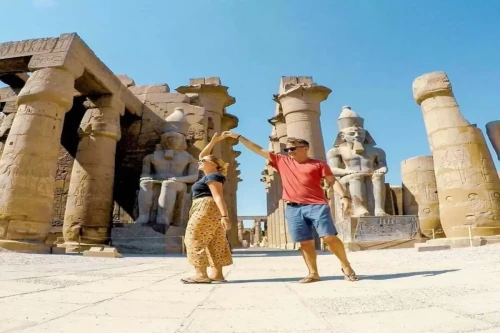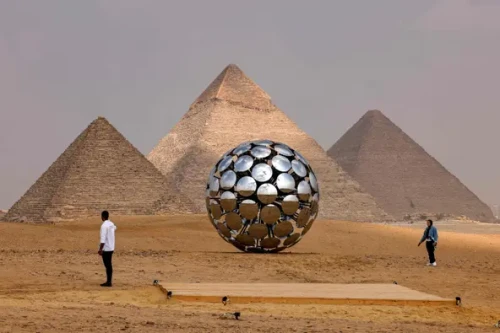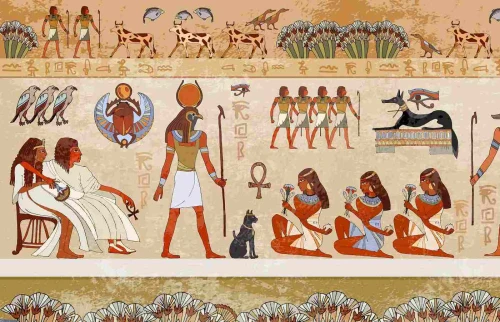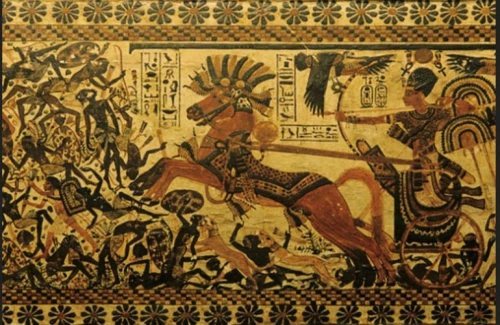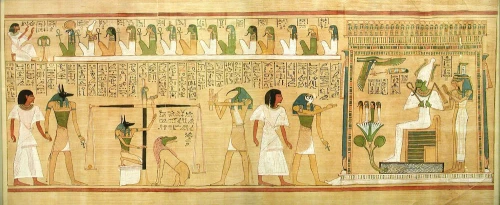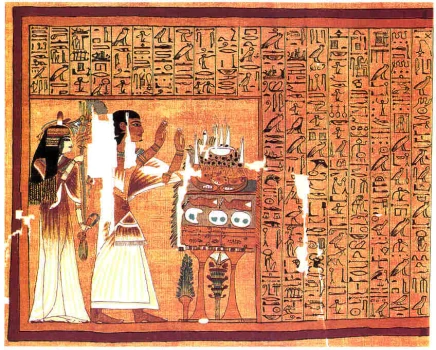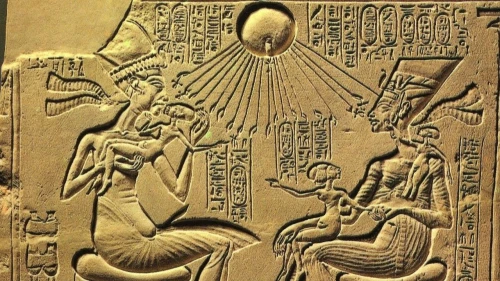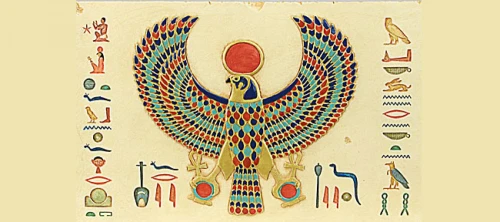
FALCON From Egypt's most ancient history, the falcon, or hawk, has held a place of honor in Egyptian mythology. Soaring through the desert sky, the falcon was believed to be a protector of the king and a manifestation of the sun god Re. Hierakonpolis (hawk city) is the site of one of the earliest cult centers devoted to the falcon god, and many important discoveries have been made at this site. The Narmer Palette, an early historical document (c. 3100 B.C) found at the site, shows the falcon as king, subjugating his enemies. Hawks have always been sacred in Egyptian religion.
They represented the war gods Montu and Sokar, and the goddess Hathor was sometimes portrayed as a female falcon. The Greek historian Herodotus mentions in his Histories that the punishment for killing a falcon was death. In his role as protector of the king, the falcon is frequently shown with outstretched wings. An example of this can be seen in the Fourth Dynasty statue of The well-preserved Ptolemaic temple at Edfu is guarded by two monumental falcons carved from black granite. They protect the figure of the king.
King Chephren (Khafre), where a falcon figure hovers behind the king's head with outstretched wings. In the Pyramid Texts, the king's soul is equated with the flight of a falcon when it rises to heaven. During the Late period (747–332 B.C), hawks were mummified and placed in a catacomb at Saqqara as votive offerings to the falcon god Horus. Animal mummification was big business in ancient Egypt, and it seems a large part of it was fraudulent. Ancient Egyptians mummified all kinds of creatures, from bulls to birds, and for different reasons. Some were pets preserved to keep their masters company in the next world, but many were raised to be sacrificed as offerings to the gods.
When an Egyptian wished a favor from a god, he or she might leave an offering of a mummified animal in the god's temple. The largest animal cemeteries in Egypt are the ibis and falcon galleries at Saqqara miles of tunnels containing mummified birds. Carved into the walls of each tunnel are thousands of niches, each with a mummified bird inside a clay pot. When the priest ran out of niches, he stacked the pots on the floor. The ibis was sacred to Thoth and the falcon sacred to Horus. Along the route to the galleries were stalls where pilgrims could purchase mummified birds, many of which had been raised for that purpose. After a pilgrim selected one, it was placed in a ceramic pot and sealed. Priests of the gallery would place it in a niche and, for a small fee, say a prayer for the pilgrim. The writings of Hor, a priest in charge of the ibis galleries around 200 B.C, explain that hundreds of people were involved in the animal mummification business at Saqqara.
One of the more important jobs was doorkeeper. Hor says the doorkeeper supervised the birds and they're young and was probably responsible for raising the ibises. Unlike ibises, falcons cannot be raised in captivity, so there was no way there were enough falcon mummies to meet the demand. So suppliers began to make dummy mummies. X-rays of falcon mummies show that they are almost always ancient fakes made with a bundle of rags with beautiful wrappings on the outside. In his writings, Hor was concerned that the pilgrims were being cheated when they purchased a falcon mummy for an offering. He wrote, there must be one god in one vessel or a bird in every clay pot.
 English
English
 Spain
Spain

